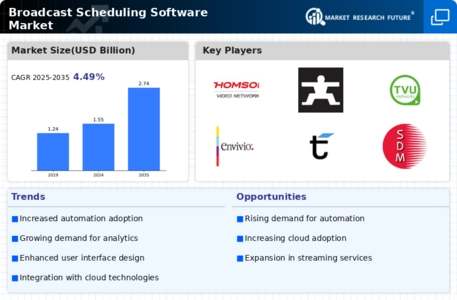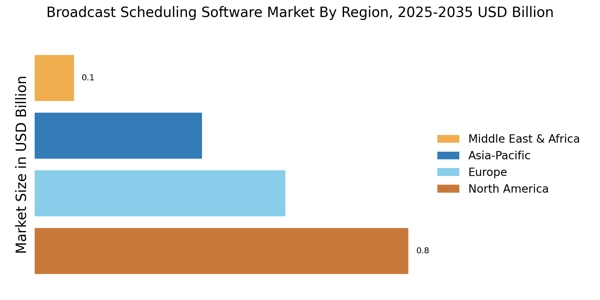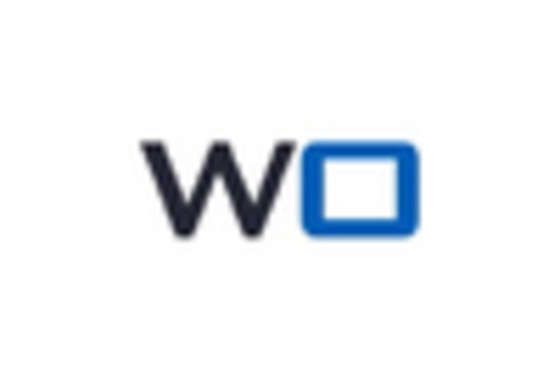The Broadcast Scheduling Software Market is currently characterized by a dynamic competitive landscape, driven by technological advancements and the increasing demand for efficient content management solutions. Key players such as WideOrbit (US), Imagine Communications (US), and Avid Technology (US) are at the forefront, each adopting distinct strategies to enhance their market positioning. WideOrbit (US) focuses on innovation through continuous software updates and user-friendly interfaces, while Imagine Communications (US) emphasizes partnerships with broadcasters to tailor solutions that meet specific operational needs. Avid Technology (US) is leveraging its extensive experience in media production to integrate advanced analytics into its scheduling software, thereby enhancing decision-making capabilities for broadcasters. Collectively, these strategies contribute to a competitive environment that is increasingly centered around technological differentiation and customer-centric solutions.
In terms of business tactics, companies are increasingly localizing their operations to better serve regional markets, which appears to be a response to the diverse needs of global broadcasters. The market structure is moderately fragmented, with several players vying for market share, yet the influence of major companies remains substantial. This competitive structure allows for a variety of solutions, catering to different segments of the market, from small local broadcasters to large international networks.
In August 2025, WideOrbit (US) announced a strategic partnership with a leading cloud service provider to enhance its broadcast scheduling capabilities. This collaboration is expected to facilitate the integration of cloud-based solutions, allowing broadcasters to manage their schedules more efficiently and access real-time data analytics. Such a move not only positions WideOrbit (US) as a forward-thinking player but also reflects a broader industry trend towards cloud adoption, which is likely to reshape operational efficiencies in the sector.
In September 2025, Avid Technology (US) launched a new version of its scheduling software that incorporates artificial intelligence to optimize content delivery. This development is significant as it aligns with the growing trend of AI integration within the media industry, potentially allowing broadcasters to automate scheduling processes and improve audience engagement through data-driven insights. Avid's focus on AI may provide a competitive edge, particularly as broadcasters seek to enhance their operational efficiencies and adapt to changing viewer preferences.
Meanwhile, in July 2025, Imagine Communications (US) expanded its global footprint by entering into a joint venture with a regional player in Asia. This strategic move is indicative of the company's commitment to regional expansion and localization of services, which could enhance its competitive positioning in emerging markets. By aligning with local partners, Imagine Communications (US) may better understand regional broadcasting needs and tailor its offerings accordingly, thereby strengthening its market presence.
As of October 2025, the Broadcast Scheduling Software Market is witnessing trends that emphasize digitalization, sustainability, and the integration of advanced technologies such as AI. Strategic alliances are becoming increasingly pivotal, as companies recognize the need to collaborate to enhance their technological capabilities and market reach. Looking ahead, competitive differentiation is likely to evolve from traditional price-based competition to a focus on innovation, technological advancements, and the reliability of supply chains. This shift suggests that companies that prioritize these aspects will be better positioned to thrive in an increasingly complex and competitive landscape.


















Leave a Comment